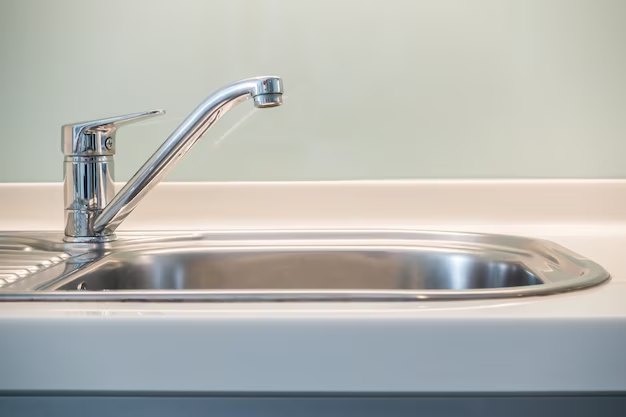When it comes to designing your kitchen, choosing the right sink is crucial. Not only does it play a major role in your kitchen’s functionality, but it also contributes to its overall aesthetic. There are many kitchen sink types and materials to consider, each offering unique benefits. In this guide, we’ll break down the different kitchen sink types and the best materials for your needs. Whether you’re remodeling or just replacing an old sink, this guide will help you make an informed decision.
Understanding Different Kitchen Sink Types
There are various kitchen sink types, and each is designed to suit specific needs and preferences. Below are the most popular options:
Undermount Kitchen Sinks
Undermount sinks are mounted underneath the countertop, creating a smooth and seamless look. This type of sink is perfect for modern kitchens and allows for easy cleaning, as there’s no lip to catch debris. Undermount sinks are also great for larger countertops since they provide more space for work.
Drop-In Kitchen Sinks
Also known as top-mount sinks, drop-in sinks are installed into a hole cut into the countertop. The edges of the sink rest on the countertop surface, making installation easier and faster. Drop-in sinks are common in older kitchens but are still a popular choice because of their versatility and affordability.
Farmhouse Sinks
Farmhouse sinks, or apron-front sinks, are known for their deep, wide basin and exposed front. These sinks are ideal for large families and those who frequently wash large pots and pans. The classic design gives kitchens a rustic or vintage feel, making it a great choice for traditional and country-style kitchens.
Single-Basin Sinks
Single-basin sinks are straightforward, with one large, deep bowl. These are perfect for people who need extra space to wash large items, such as baking sheets and pots. They’re also easier to clean since there’s no divider, but they may not have the same multitasking capacity as double-basin sinks.
Double-Basin Sinks
A double-basin sink offers two separate compartments, making it easier to multitask. You can use one side for washing dishes and the other for rinsing. Double-basin sinks are versatile and practical for busy kitchens, allowing for more organized workflows.
Corner Sinks
Corner sinks are installed into the corner of the kitchen to save space. This type of sink is ideal for smaller kitchens or anyone looking to maximize counter space. Corner sinks come in various shapes, including triangular and L-shaped, and can be combined with a countertop to create a streamlined design.
Integrated Sinks
Integrated sinks are built directly into the countertop, creating a seamless and unified surface. Made from the same material as the countertop, they’re highly modern and sleek. These sinks are low-maintenance and easy to clean but are often custom-made and can be more expensive.
Choosing the Right Material for Your Kitchen Sink
Once you’ve chosen a sink type, it’s important to pick the material that best suits your kitchen’s style, functionality, and budget. Here are some common materials for kitchen sink types:
Stainless Steel
Stainless steel is one of the most popular materials for kitchen sink types because of its durability, resistance to stains, and ease of cleaning. It’s perfect for both modern and traditional kitchens. Stainless steel sinks come in a variety of finishes, from brushed to polished, allowing for customization.
Granite Composite
Granite composite sinks are made from a mixture of natural stone and acrylic resins, providing a sleek, solid surface. These sinks are durable, scratch-resistant, and come in a range of colors, making them a popular choice for high-end kitchens. They are also resistant to heat and stains.
Cast Iron
Cast iron sinks are known for their classic look and durability. Coated with enamel, these sinks are resistant to chips and scratches. While they are heavy, cast iron sinks offer a timeless and elegant appeal, especially when paired with a farmhouse-style sink.
Fireclay
Fireclay sinks are made from clay that’s fired at high temperatures. These sinks are known for their smooth, glossy finish and resistance to stains and scratches. Fireclay sinks have a similar look to cast iron but are generally lighter and more durable over time.
Composite Materials
Many modern sinks are made from composite materials, which combine different substances like resin, quartz, and acrylic. Composite sinks can mimic the appearance of natural stone without the high cost or maintenance. They are often more lightweight than granite composite or cast iron sinks.
Copper
Copper sinks are luxurious and unique, offering an old-world charm. They are naturally resistant to bacteria and provide a warm, rustic look. However, copper sinks require regular maintenance to prevent tarnishing and maintain their appearance.
Concrete
Concrete sinks are custom-made and are perfect for those looking for a modern, industrial look. They can be molded into any shape and size, allowing for complete customization. However, concrete sinks can be prone to staining and require proper sealing.
Conclusion
Choosing the right kitchen sink type and material is key to creating a functional and stylish kitchen. Whether you’re looking for a sink that complements your modern décor or one that provides heavy-duty functionality for family meals, there’s a perfect sink for every need. By considering your style preferences, budget, and how you plan to use the sink, you can make a decision that will work for years to come.
FAQs
What is the best type of kitchen sink for a small kitchen?
For small kitchens, a corner sink or a single-basin sink is ideal. These options help maximize counter space while still offering ample functionality.
What is the difference between a drop-in and an undermount sink?
A drop-in sink rests on top of the countertop, while an undermount sink is installed beneath the countertop for a seamless look. Undermount sinks are easier to clean since there are no edges to catch debris.
Are farmhouse sinks a good choice for modern kitchens?
Yes! Farmhouse sinks can add character to a modern kitchen while offering practicality. Their large basin makes them great for handling big pots and dishes.
What kitchen sink material is the most durable?
Stainless steel and granite composite are both highly durable. Stainless steel is resistant to stains, scratches, and heat, while granite composite offers resistance to chips and scratches with a sleek look.
Do stainless steel sinks scratch easily?
Stainless steel sinks are generally resistant to scratches, but fine scratches can occur over time, especially with heavy use. However, they don’t affect the sink’s performance and can be polished out.
How do I maintain a fireclay kitchen sink?
Fireclay sinks are low maintenance but require occasional cleaning with mild soap and water to prevent staining. Avoid using harsh chemicals that could damage the glossy finish.
Can I install a sink myself?
While it’s possible for a skilled DIYer to install a kitchen sink, professional installation is recommended, especially for undermount or integrated sinks, as they require precise measurements and tools.
What’s the difference between a single-basin and a double-basin sink?
A single-basin sink offers one large, deep basin ideal for washing large items. A double-basin sink divides the space into two, making it easier to multitask, like washing and rinsing dishes simultaneously.













































